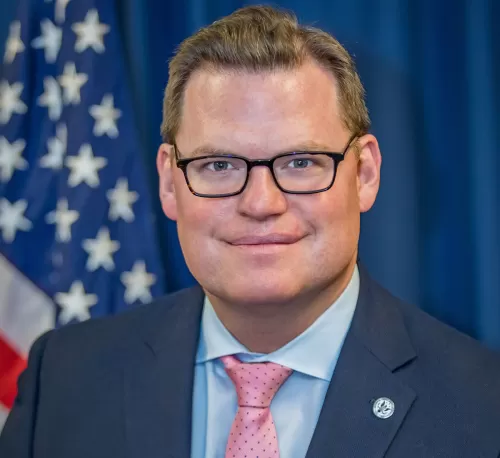NCUA Vice Chairman Kyle S. Hauptman
As Prepared for Delivery on March 17, 2022
Thank you, Jim, Nicole and everyone who worked on the 2022 Annual Performance Plan. This document is intended to set our annual priorities within the over-arching goals of the Strategic Plan. In brief, they are:
- Ensure a safe, sound, and viable system
- Improve the financial well-being of individuals and communities
- Maximize NCUA organizational performance
I am pleased to see more emphasis in the Annual Performance Plan on quantifiable indicators. What gets measured is gets done. This is an improvement over last year’s plan and I know we can include more of such measures in the future.
In addition to safety and soundness, my guiding principles are regulatory clarity and open, transparent communication with stake holders. Ensuring safety and soundness, advancing the financial well-being of members, and maximizing the agency’s performance can only improve with a commitment to clarity and open communication.
I appreciate my fellow Board members’ support for improving regulatory clarity by addressing rules that may conflict with each other, such as those around participation loans. And the support from the Board and staff for clarity around credit union fintech innovation.
Open and transparent communication assumes NCUA isn’t just talking at credit unions. For us to truly ensure the quality and consistency of examinations and examination reports, we need credit unions’ help in normalizing quality-assurance tools, such as feedback surveys and the use of recordings during exit meetings and joint conferences.
Recording exit meetings and joint conferences has been part of the supervisory manual for years for federally chartered credit union, but then with the pandemic and the use of Zoom and Teams for meetings with credit unions, recording has become much easier, and more expected. These recordings are beneficial for the agency and the credit unions as they provide an invaluable resource for new examiners, credit union staff, and boards as well as end any questions of what exactly was said.
To open the lines of communication with credit union organizing groups, we are making the new chartering guide a living document. I’d like to thank the CURE staff for committing to seek ongoing input from users of the guide and updating it regularly.
Regarding the Credit Union Diversity Self-Assessment (CUDSA) survey, although I do not agree with the exact wording in the Annual Performance Plan, I do not dispute the importance of diversity in the credit union movement.
In fact, the credit union movement itself is astonishingly diverse. Credit unions were the original answer for financial inclusion and underserved groups, such as faith-based populations and ethnic groups, found a home in the credit union movement. But those very diverse fields of membership put a constraint on the diversity of individual credit unions.
I have reason to believe that one reason credit unions haven’t returned our survey is due to the very nature of some fields of membership. For example, we’ve talked lately about the 12 Ukrainian American credit unions. Other credit unions may have boards composed entirely of members of a particular place of worship, or all members of one Native American tribe. And that is their business, not NCUA’s.
We haven’t made that as clear as we can, and when this agency wants to make something clear, it does so. For example, a few years ago NCUA adopted, right or wrong, a no-tolerance policy on employee use of cannabis. We can adopt a similar stance for this diversity survey and make it clear that no NCUA employee has any business commenting negatively on a credit union’s demographics.
Another thing we hear from credit unions is they want assurances that their individual information won’t be used against them or against the credit union movement. We can and should address this concern directly, for example by anonymizing the surveys. If we do these things, I know we will see greater utilization of the tool.
Mr. Chairman, this concludes my remarks.




